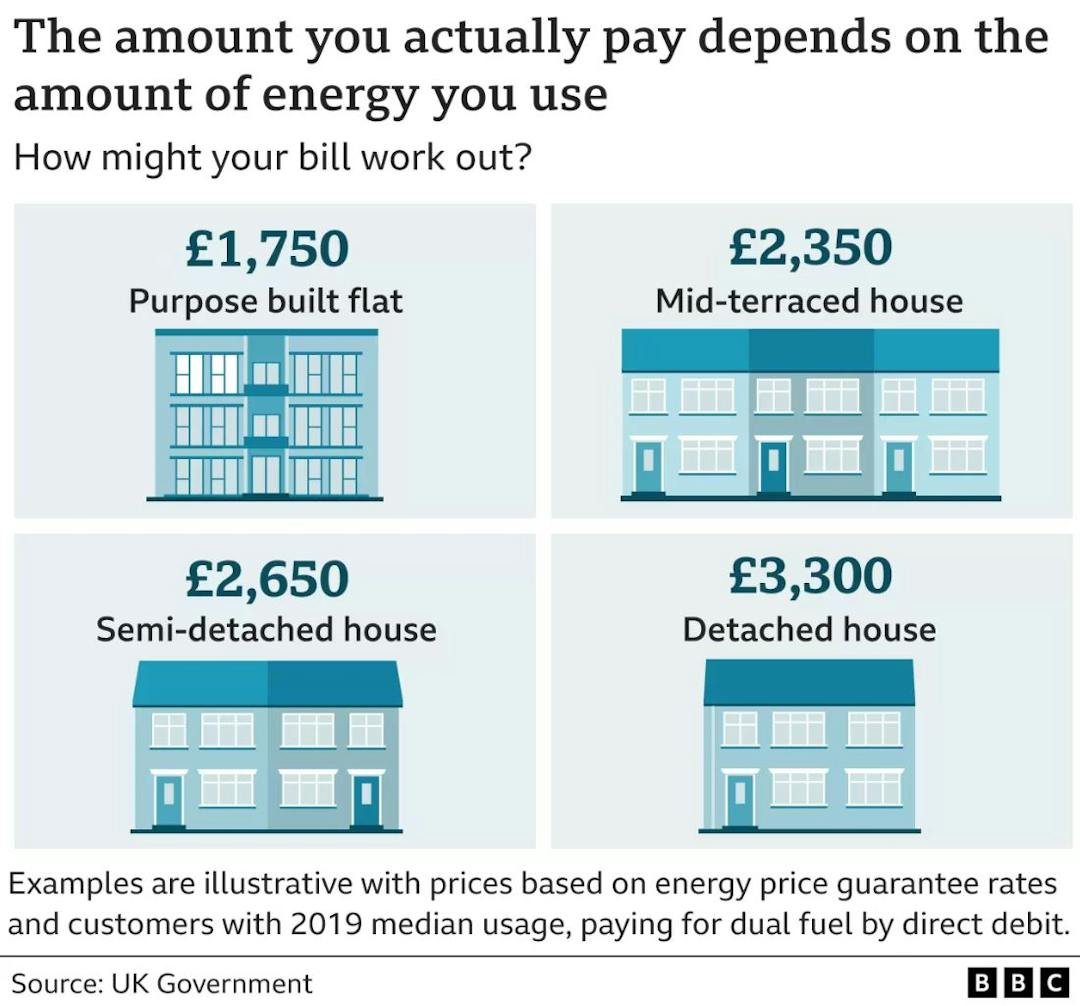Why has my energy bill increased

Page last reviewed 21st Oct 2022
Why has my energy bill increased?
Energy bills are a significant concern within The Royal Borough and across the UK. This is due to the increase in energy demand following the end of the COVID-19 pandemic and exacerbated by the conflict in Ukraine putting pressure on Russian gas supply.
In response to these challenges, the UK Government released the Energy Price Guarantee (this was known as the Energy Price Cap prior to October 2022). Due to the recent changes in Government this Energy Price Guarantee will be reviewed in April 2023.
The Energy Price Guarantee protects consumers from increasing prices by putting a price cap on the unit cost of electricity and gas. The cap will see an average household annual energy bill at approximately £1,000 less than what it should be, based on current October 2022 energy prices.
It should be noted that each household energy cost will vary depending on the household energy use, house location, how energy is paid and tariff. Therefore, a “£2,500 average energy cost” figure you may have heard is an example energy cost for a household with typical consumption of 12,000 kWh of gas a year, and 2,900 kWh of electricity a year, and paying by direct debit.
The image suggests the average cost of energy for different property types against 2019 data for median usage, paying for dual fuel, by direct debit (Source: UK Government, BBC).
What tariff am I on?
If you are not on a fixed energy tariff for the next 6+ months, you may notice your energy bills change because of the Energy Price Guarantee.
Your energy tariff sets the price you pay for gas and electricity. If you're not sure what tariff you're on, check your energy bills or contact your energy supplier.
Standard Variable Tariff (Suppliers default tariff)
If you're on your supplier's 'default tariff', this is the same as a standard variable tariff. So, you might be on the default tariff if:
- Your fixed rate tariff has ended
- You moved home
- You moved to a new supplier when your old supplier went bust
- You’re likely to be on a default tariff if you haven’t switched suppliers in the last year, or you’ve never checked what tariff you’re on
Fixed Tariff
If you're on a fixed tariff you may get a discount from 1 October 2022 because of the Energy Price Guarantee. You’ll only get a discount if your rate is more than what you would pay on a standard variable tariff. Your supplier must reduce the rate you pay for each unit of energy - these are kilowatt hours (kWh).
You should bear in mind that you’ll still pay more if you use more than your average amount of gas and electricity.
Citizens Advice recommend you check your new rate as soon as possible after 1 October 2022. If your fixed tariff rate is still higher than your supplier’s standard variable tariff, check if your supplier will let you change tariffs. They may let you change tariffs free of charge.
There is a limit to how much your supplier can reduce your energy rate - this means your new rate might still be higher than the standard variable tariff.
Green Tariff
You may get a discount from 1 October 2022 because of the Energy Price Guarantee.
You’ll only get a discount if your rate is more than what you would pay on a standard variable tariff. Your supplier must reduce the rate you pay for each unit of energy (kilowatt hours (kWh)).
Like the Fixed Tariff, you’ll still pay more if you start using more gas and electricity and there’s a limit to how much your supplier can reduce your energy rate - this means your new rate might still be higher than the standard variable tariff.
Variable Green Energy Tariff,
Your energy supplier can still increase your energy rate. Check your contract with your energy supplier to find out when and how your rate can change.
Check your new rate as soon as possible after 1 October 2022. You might be able to avoid an energy rate increase if your supplier will let you move to their standard variable tariff. Rates for standard variable tariffs are fixed from 1 October 2022 until 31 March 2023. Check if your supplier will charge you for changing tariffs.
Citizens Advice say you won’t find many energy tariffs on price comparison tools at the moment - this is because of changes in the energy industry. If you don’t find a better tariff than the tariff you’re on it’s probably better to wait until deals are available again. Therefore, it is probably worth staying on your default tariff because there aren’t as many cheap deals available at the moment, but the Energy Price Guarantee will limit how much you have to pay.
Please follow the below links to find out more on energy bills, available grants and advice.
- RBWM Together - How to reduce my energy bill
- RBWM Together -Energy at home grants
- Ofgem
- The Energy Savings Trust
- Citizens Advice
- Money saving expert
